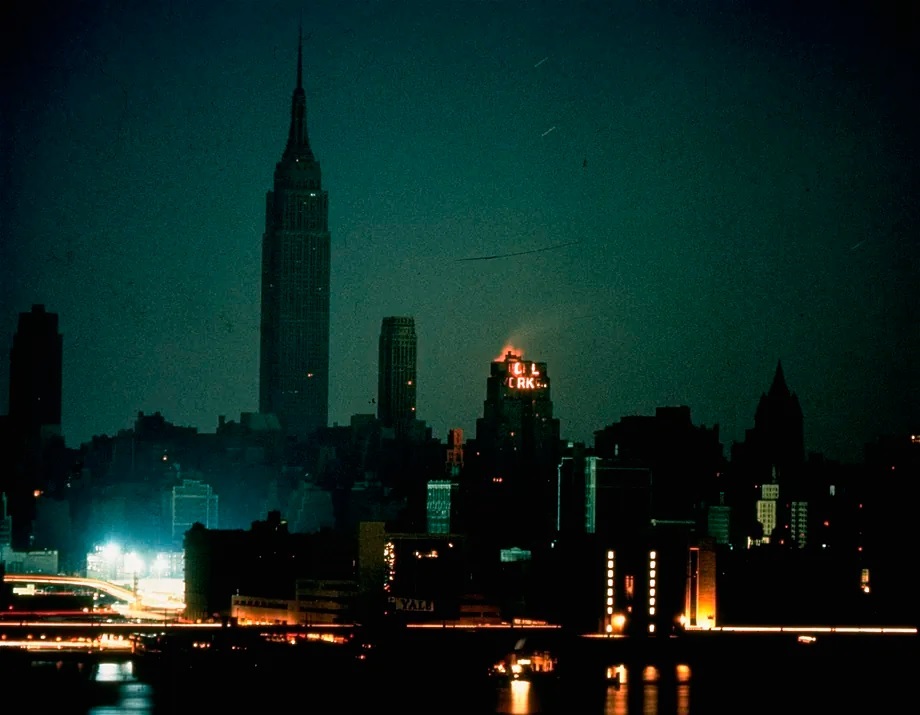If we listen to the experts, the world must prepare for massive blackouts like the one we experienced in our country. If we listen to the experts, a solar storm could send us back to the Stone Age at any moment. If we listen to the experts, dozens of cyberattacks against the global power grid occur every day. If we listen to the experts, they tell us that we are not listening to the experts.
Solar storms, malfunctions, poor grid maintenance, tree falls, and adverse weather phenomena have been added to cyberattacks as the most effective element of large-scale blackouts this century. However, after the major blackouts in history, there has always been room for major conspiracies. Whether it's UFOs, far-right, U.S. imperialism, communists, and now, Putin.
On November 9, 1965, a power outage affected 30 million people in eight states on the East Coast of the US and residents of the Canadian provinces of Ontario and Quebec for 13 hours. In New York alone, 800,000 people were trapped in the subway. Even without social media, in the '60s, losing television was enough to subscribe to the trendy conspiracy theories: aliens (some claimed to have seen two fireballs flying over the city) and communists (President Johnson had just sent 22,000 soldiers to Vietnam). Half a thousand flights were diverted, but not a single accident occurred.
On July 13, 1977, New York City residents were without electricity for almost 24 hours. What is still known as the great blackout began at 8:37 p.m. with a lightning strike at Buchanan South, a power substation on the Hudson River. Despite airport closures, train stoppages, and the rescue of 4,000 subway passengers, the event was remembered for the looting, which sparked 1,000 fires and the looting of 1,600 establishments.
On February 19, 1998, residents were without power for five weeks. The power company supplied electricity to part of the city through four cables. Two of them failed due to extremely hot weather conditions. And the other two became overloaded when the first two failed. The blackout was remembered for how residents adapted to living without electricity, driving without traffic lights, and everything failing intermittently until the supply was fully restored. But what most neighbors remember is the noise of the generators brought from the rest of New Zealand and Australia, distributed throughout the affected streets.
On November 10, 1999, nearly 100 million people were left in the dark in the south and southeast of the country after a lightning strike hit a power substation in Sao Paulo. The incident lasted for 93 days. More than 60,000 people were in the Rio de Janeiro subway when the lights went out. Thousands of soldiers were mobilized to prevent looting. In some areas, the power could not be restored until June 22.
From August 14 to 16, 2003, over 50 million people were affected by the blackout. Some for a few hours, others for up to two weeks. It is considered the most expensive blackout in history in terms of economic losses: $6 billion. Apparently, trees had fallen on transmission lines. However, the real issue was a failure in the electric company's alarm system, which did not report the incident, triggering a larger chain of damage.
The blackout on May 25, 2005, affected five million people. It started with the overheating and subsequent fire of an old and rundown transformer at the Liobino neighborhood power substation in the south of Moscow, which caused half of Moscow to collapse. Many citizens were left without water. The interruption caused two chemical leaks. One was a leak of an unknown gas at a petrochemical plant. And hours later, another of nitrous oxide at a factory in Tula.
In February 2008, about 4.5 million citizens of a Chinese city were without electricity for nearly two weeks after a violent ice storm during the worst winter of the century. High-voltage towers bent like paper balls. The Chinese government stated that 11 electricians lost their lives while trying to repair the infrastructure.
On July 30 and 31, 2012, there were actually two blackouts. The issue was that the second one affected half of the country, impacting 670 million people, or 9% of the world's population. It is considered the most significant blackout in history in terms of the number of affected individuals. The cause: the collapse of the power grid, which was inadequate for the emerging country's needs.
From March 7 to 8, 2019, the country experienced the largest power outage in its history. In some states, it lasted between five and seven continuous days. The cause was a failure at the Simón Bolívar Hydroelectric Plant. Besides affecting transportation, hospitals, and water services, it also triggered massive looting. At least 43 people lost their lives. Experts blamed the failure on lack of maintenance, fuel shortages at thermal power plants, corruption in the sector, low wages, and the inexperience of those in charge due to the exodus of experts from the country. But Maduro provided a different explanation: "The far-right are undoubtedly the intellectual and material authors of this attack, using high-level technology that only the US government possesses in the world. The announced electrical war directed by US imperialism against our people will be defeated."
The blackout on July 24, 2021, affected half of the Peninsula and part of Portugal. One million citizens were left without electricity due to a seaplane trying to extinguish a fire under power interconnection lines in France. The most striking event was the non-blackout in November of the same year when, fearing an energy collapse in Europe due to Russia and price hikes, such panic ensued that Spaniards desperately rushed to buy generators and supplies.
